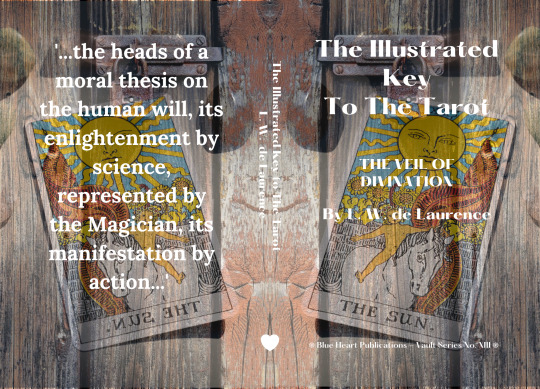#Practical application
Explore tagged Tumblr posts
Text
Transforming Learning with Gagné’s Blueprint for Microlearning Excellence
In the realm of educational psychology, Robert Gagné’s work stands out for its profound impact on instructional design. His "Nine Events of Instruction" provide a comprehensive framework for designing effective learning experiences. When combined with the microlearning approach, Gagné’s principles can revolutionize how organizations train and develop their workforce. This article explores Gagné’s instructional blueprint and its application in microlearning to achieve optimal learning outcomes.
Understanding Gagné’s Nine Events of Instruction
Gagné’s Nine Events of Instruction are a systematic approach to teaching that enhances the learning process. Each event addresses a specific aspect of learning, ensuring that learners are engaged, motivated, and able to retain and apply new knowledge. The nine events are:
Gain Attention: Capture the learner’s interest to prepare them for learning.
Inform Learners of Objectives: Clearly state what learners will achieve by the end of the instruction.
Stimulate Recall of Prior Learning: Help learners connect new information with what they already know.
Present the Content: Deliver the instructional material in an effective and engaging manner.
Provide Learning Guidance: Offer support and strategies to help learners understand and apply the content.
Elicit Performance (Practice): Give learners opportunities to practice what they’ve learned.
Provide Feedback: Offer constructive feedback to reinforce learning and correct mistakes.
Assess Performance: Evaluate learners’ understanding and proficiency.
Enhance Retention and Transfer: Help learners retain information and apply it in different contexts.
Integrating Gagné’s Principles with Microlearning
Microlearning, characterized by its short, focused learning modules, aligns well with Gagné’s events. Here’s how each of Gagné’s events can be effectively integrated into a microlearning framework:
Gain Attention:
Microlearning Application: Use engaging multimedia elements such as animations, videos, or provocative questions to capture learners’ attention quickly.
Example: Start a cybersecurity module with a short, dramatic video showcasing a real-life security breach to highlight the importance of the topic.
Inform Learners of Objectives:
Microlearning Application: Clearly state the learning objectives at the beginning of each microlearning module. This helps learners understand the purpose and expected outcomes.
Example: “By the end of this module, you will be able to identify and respond to phishing attempts.”
Stimulate Recall of Prior Learning:
Microlearning Application: Incorporate brief reviews or questions that prompt learners to recall relevant prior knowledge before introducing new content.
Example: Before introducing advanced sales techniques, ask learners to recall and list basic sales principles covered in previous modules.
Present the Content:
Microlearning Application: Deliver content in small, manageable chunks using various formats such as videos, infographics, and interactive slides to maintain engagement.
Example: A microlearning module on project management could include short videos explaining each phase of a project lifecycle, supplemented with infographics summarizing key points.
Provide Learning Guidance:
Microlearning Application: Offer tips, examples, and strategies within the module to help learners understand and apply the content.
Example: During a module on customer service, provide scenarios and suggested responses to common customer queries.
Elicit Performance (Practice):
Microlearning Application: Include interactive elements such as quizzes, simulations, and drag-and-drop activities that allow learners to practice new skills.
Example: In a module on data analysis, include a simulation where learners interpret data sets and make decisions based on their analysis.
Provide Feedback:
Microlearning Application: Offer immediate, specific feedback on practice activities to reinforce correct responses and guide learners in correcting mistakes.
Example: After a quiz on compliance regulations, provide explanations for each answer, highlighting why certain responses are correct or incorrect.
Assess Performance:
Microlearning Application: Use assessments such as quizzes, scenario-based questions, or mini-projects to evaluate learners’ understanding and proficiency.
Example: At the end of a module on financial literacy, include a quiz that tests learners’ ability to balance a budget or interpret financial statements.
Enhance Retention and Transfer:
Microlearning Application: Include activities and resources that encourage learners to apply what they’ve learned in real-world contexts. Follow-up modules and refresher activities can reinforce retention.
Example: After completing a module on leadership skills, encourage learners to implement a leadership strategy in their workplace and report back on their experiences in a follow-up discussion.
Benefits of Applying Gagné’s Blueprint to Microlearning
Enhanced Engagement: By capturing attention and clearly outlining objectives, learners are more motivated and focused. The varied presentation of content keeps the learning experience fresh and engaging.
Improved Retention: Gagné’s emphasis on recall, practice, and feedback helps reinforce learning and improve retention. Microlearning’s short modules also aid in better retention by preventing cognitive overload.
Immediate Application: Microlearning’s focus on practical application aligns with Gagné’s principles of practice and performance assessment, enabling learners to apply new skills and knowledge immediately.
Flexible and Accessible: The on-demand nature of microlearning allows learners to access content anytime, anywhere, fitting training into their busy schedules.
Continuous Improvement: Regular assessment and feedback ensure that learners continuously improve and refine their skills, leading to better overall performance and productivity.
Tips for Implementing Gagné’s Blueprint in Microlearning
Start with Clear Objectives: Ensure that each microlearning module has clearly defined objectives that align with Gagné’s framework. This provides direction and purpose for the learners.
Incorporate Diverse Media: Use a mix of videos, infographics, interactive quizzes, and simulations to present content engagingly and effectively.
Provide Immediate Feedback: Incorporate mechanisms for immediate feedback to help learners correct mistakes and reinforce learning in real-time.
Encourage Real-World Application: Design activities that encourage learners to apply their knowledge in practical, real-world scenarios to enhance retention and transfer.
Monitor and Iterate: Continuously monitor the effectiveness of the microlearning modules and make iterative improvements based on learner feedback and performance data.
Conclusion
Integrating Gagné’s Nine Events of Instruction with microlearning offers a powerful approach to designing effective and engaging training programs. By following Gagné’s blueprint, organizations can enhance the learning experience, improve knowledge retention, and ensure that learners can apply new skills in their work. This combination of structured instructional design and flexible, accessible learning modules sets the stage for microlearning success and drives organizational growth and development.
#Gagné’s Nine Events of Instruction#Microlearning success#Instructional design#Employee training#Knowledge retention#Engagement in learning#Practical application#Real-world scenarios
2 notes
·
View notes
Text
3rd Meeting, Expert Consultation, UN Guiding Principles on Business and Human rights.
Expert Consultation on the practical application of the UN Guiding Principles on Business and Human rights (UNGPs) to the activities of technology companies
Watch the 3rd Meeting, Expert Consultation, UN Guiding Principles on Business and Human rights!

#expert consultation#practical application#guiding principles#business enterprises#business and human rights#ungps#tech companies#emerging technology#technology#digital rights
0 notes
Text
Wake Up! Come To The Table For Breakfast!
Good Morning. Wake up. It’s time for the most important meal of the day. At least that is what I’ve heard growing up. I chose not to eat the physical food because the spiritual food was filling enough, lol. As an adult I can say that I have never been big on eating breakfast. But as of today, my idea of the importance of breakfast has now been greatly impacted. It is now 6:00am and I want to…
0 notes
Text

Innovative Marketing Strategies from Distance Education Students: A Platform of Creativity and Practical Application
This image depicts a glowing light bulb, symbolizing innovation and bright ideas, set against a blurred background of a group of students engaged in discussion. It represents the creative marketing strategies developed by distance education students, combining theoretical knowledge with practical application.
#Innovative Marketing#Distance Education#Practical Application#Creative Strategies#Student Marketing
0 notes
Text
Autoshop Thoughts
I wonder if instead of creating all new cars every year, what if rather they streamlined car chassis, and created modular type components to go in said car?
Pros:
-Creates a streamlined system for cars to be produced with modularity so long as everything has a modular/interchangeable footprint
-Reduces need for waste
-Makes it easier for repair staff to access and potentially keeps frames consistent (prevents new frame designs from being encountered that can't withstand the upward force from below the car chassis from entering the market)
-Promotes repair and reutilization of materials as opposed to one time use materials
Cons:
-Consumers may become bored of "old design" (can be fixed by marketing new "bodies" (same engine, sexier look))
-Can lead to more necessary frame checks over time for wear and tear, particularly in corrosive environments (water, humid, corrosion from sand blasting over time)
-Designers may need to pay more attention to modularity within the whole system to prevent physics problems (lopsidedness due to mass being placed on a singular side of the car as opposed to being evenly distributed within a singular unit.
Just some thoughts as my oil is being changed.
0 notes
Text
youtube
#youtube#militarytraining#Balikatan#Military readiness#Tactical Combat Casualty Care#Practical Application#Field training#Combat scenarios#Emergency response#First aid training#Medical simulation#Combat medicine#Military training#Combat tactics#Military operations#Military drills#Military personnel#Military exercise#Tactical training#Combat training#Tactical skills#B-Roll
1 note
·
View note
Text
"Bridging the Mystical Realm: Exploring 'The Illustrated Key To The Tarot' by L. W. de Laurence"

L. W. de Laurence's "The Illustrated Key to the Tarot: The Veil of Divination" stands as a classic work that has guided countless enthusiasts through the intricate tapestry of the tarot. From the moment one embarks on this journey through the pages of de Laurence's comprehensive guide, it becomes evident that the author possesses a deep and nuanced understanding of the mystical world of divination.
The title itself, "The Illustrated Key to the Tarot," alludes to the invaluable resource that lies within these pages. De Laurence's approach is both scholarly and accessible, making this work suitable for both seasoned practitioners and newcomers to the world of tarot. The inclusion of illustrations enhances the learning experience, providing visual cues that complement the detailed explanations of each card's symbolism, meaning, and potential interpretations.
The book serves as a masterful introduction to the tarot, elucidating the origins of this ancient system and its evolution over the centuries. De Laurence navigates through the symbolism of the major and minor arcana with clarity, unraveling the threads of esoteric wisdom that connect each card. The historical context and cultural influences that have shaped the tarot are meticulously explored, providing readers with a holistic understanding of this divinatory art.
What sets "The Illustrated Key to the Tarot" apart is its practical approach to divination. De Laurence not only unveils the symbolic language of the tarot but also offers guidance on how to conduct readings. The inclusion of spreads, interpretations, and examples ensures that readers can immediately begin applying their newfound knowledge. This blend of theory and practical application makes the book a valuable tool for those seeking to deepen their tarot practice.
However, it is crucial to acknowledge the controversial nature of L. W. de Laurence, a figure whose contributions to occult literature have been both praised and criticized. His influence on the dissemination of esoteric knowledge is undeniable, yet his methods and business practices have sparked debates within the occult community. Readers approaching this work should be aware of the historical context surrounding the author and approach the material with discernment.
In conclusion, "The Illustrated Key to the Tarot: The Veil of Divination" by L. W. de Laurence stands as a timeless guide to the mystical art of tarot reading. Whether one is a novice seeking an entry point into the world of divination or an experienced practitioner aiming to deepen their understanding, this book provides a rich tapestry of knowledge and insight. De Laurence's meticulous exploration of the tarot's symbolism, coupled with practical applications, ensures that this work remains a valuable resource for those who wish to unlock the secrets veiled within the cards.
L. W. de Laurence's "The Illustrated Key to the Tarot: The Veil of Divination" is available in Amazon in paperback 13.99$ and hardcover 21.99$ editions.
Number of pages: 277
Language: English
Rating: 8/10
Link of the book!
Review By: King's Cat
#L. W. de Laurence#The Illustrated Key to the Tarot#Tarot divination#Esoteric wisdom#Major arcana#Minor arcana#Symbolism#Tarot origins#Historical context#Cultural influences#Divinatory art#Visual illustrations#Tarot interpretations#Practical application#Tarot spreads#Tarot readings#Occult literature#Mystical traditions#Symbolic language#Tarot symbolism#Tarot practitioner#Tarot cards#Tarot meanings#Divination techniques#Tarot history#Tarot guidance#Esoteric knowledge#Occult community#Controversial figure#Tarot practice
0 notes
Text
"Bridging the Mystical Realm: Exploring 'The Illustrated Key To The Tarot' by L. W. de Laurence"

L. W. de Laurence's "The Illustrated Key to the Tarot: The Veil of Divination" stands as a classic work that has guided countless enthusiasts through the intricate tapestry of the tarot. From the moment one embarks on this journey through the pages of de Laurence's comprehensive guide, it becomes evident that the author possesses a deep and nuanced understanding of the mystical world of divination.
The title itself, "The Illustrated Key to the Tarot," alludes to the invaluable resource that lies within these pages. De Laurence's approach is both scholarly and accessible, making this work suitable for both seasoned practitioners and newcomers to the world of tarot. The inclusion of illustrations enhances the learning experience, providing visual cues that complement the detailed explanations of each card's symbolism, meaning, and potential interpretations.
The book serves as a masterful introduction to the tarot, elucidating the origins of this ancient system and its evolution over the centuries. De Laurence navigates through the symbolism of the major and minor arcana with clarity, unraveling the threads of esoteric wisdom that connect each card. The historical context and cultural influences that have shaped the tarot are meticulously explored, providing readers with a holistic understanding of this divinatory art.
What sets "The Illustrated Key to the Tarot" apart is its practical approach to divination. De Laurence not only unveils the symbolic language of the tarot but also offers guidance on how to conduct readings. The inclusion of spreads, interpretations, and examples ensures that readers can immediately begin applying their newfound knowledge. This blend of theory and practical application makes the book a valuable tool for those seeking to deepen their tarot practice.
However, it is crucial to acknowledge the controversial nature of L. W. de Laurence, a figure whose contributions to occult literature have been both praised and criticized. His influence on the dissemination of esoteric knowledge is undeniable, yet his methods and business practices have sparked debates within the occult community. Readers approaching this work should be aware of the historical context surrounding the author and approach the material with discernment.
In conclusion, "The Illustrated Key to the Tarot: The Veil of Divination" by L. W. de Laurence stands as a timeless guide to the mystical art of tarot reading. Whether one is a novice seeking an entry point into the world of divination or an experienced practitioner aiming to deepen their understanding, this book provides a rich tapestry of knowledge and insight. De Laurence's meticulous exploration of the tarot's symbolism, coupled with practical applications, ensures that this work remains a valuable resource for those who wish to unlock the secrets veiled within the cards.
L. W. de Laurence's "The Illustrated Key to the Tarot: The Veil of Divination" is available in Amazon in paperback 13.99$ and hardcover 21.99$ editions.
Number of pages: 277
Language: English
Rating: 8/10
Link of the book!
Review By: King's Cat
#L. W. de Laurence#The Illustrated Key to the Tarot#Tarot divination#Esoteric wisdom#Major arcana#Minor arcana#Symbolism#Tarot origins#Historical context#Cultural influences#Divinatory art#Visual illustrations#Tarot interpretations#Practical application#Tarot spreads#Tarot readings#Occult literature#Mystical traditions#Symbolic language#Tarot symbolism#Tarot practitioner#Tarot cards#Tarot meanings#Divination techniques#Tarot history#Tarot guidance#Esoteric knowledge#Occult community#Controversial figure#Tarot practice
1 note
·
View note
Text
Figure 11.15 shows another application of a buffer solution.

"Chemistry" 2e - Blackman, A., Bottle, S., Schmid, S., Mocerino, M., Wille, U.
#book quotes#chemistry#nonfiction#textbook#practical application#buffer#buffer solution#sodium bicarbonate#swimming pool#ph#water
1 note
·
View note
Text
Arthur “Disaster Bi” Pendragon learning about true loves kiss as a cure like:
Gwaine: For fuck’s sake, he’s not enchanted every time he smiles at someone else, Arthur! He was literally just laughing at my joke!
Arthur, aggressively frenching Merlin on the council room floor: YOU CAN NEVER BE TOO CAREFUL OKAY-
#listen#tell me i’m wrong#gaius’s salty ass is mumbling that he doesn’t remember true loves kiss involving so much tongue#and yelling at merlin to signal if he needs cpr#arthur is like ‘IM ON IT’ and just starts groping merlin’s pec#elyan is watching the drama unfold and living his best life#leon is having poetry lesson ptsd and aggressively folding himself into the fetal position#gwaine is yelling ‘THE POWER OF CHRIST COMPELS YOU’#while watching in horror as arthur practically unhinges his jaw to better suck merlin’s face#gwaine is now caught between still being miffed and asking arthur how the fuck he does that as it seems HIGHLY applicable for future use#geoffrey is present as a scribe and wondering how much of this meeting really needs to go into the archives#percy is already illustrating it#within like a week all of camelot has a Pavlovian response to merlins smile like ‘oh LAWD he comin 👀’#iconic#just a normal day in camelot#merlin#arthur pendragon#merthur#in a land of myth#and a time of gays#bbc merlin
942 notes
·
View notes
Text

serpentine!
#trigun maximum#trimax#livio the double fang#doodl#submitting my livio enjoyer application by redrawing the panel#not in love with the proportions of this but i think it was good practice!
644 notes
·
View notes
Text
Motivational Strategies for Engaging and Effective Microlearning

Microlearning is an educational strategy that delivers content in small, specific bursts, typically designed to be consumed quickly. This approach caters to the fast-paced lifestyles and short attention spans prevalent in today's society. However, the challenge remains: how do you keep learners engaged and motivated in these brief learning sessions? The answer lies in leveraging motivational concepts to inspire and enhance microlearning assets. Here’s how you can do it:
Understanding Motivation in Learning
Before diving into the specifics of how to use motivational concepts in microlearning, it’s important to understand what motivation is and why it matters. Motivation can be broadly categorized into two types: intrinsic and extrinsic.
Intrinsic Motivation: This comes from within the learner. It is driven by an interest or enjoyment in the task itself. When learners are intrinsically motivated, they engage in learning for the pure pleasure and satisfaction derived from the activity.
Extrinsic Motivation: This comes from external factors. It is driven by rewards such as grades, money, or recognition. Extrinsically motivated learners engage in an activity to earn a reward or avoid punishment.
Effective microlearning should aim to tap into both types of motivation to keep learners engaged.
Strategies to Incorporate Motivational Concepts in Microlearning
Set Clear and Achievable Goals
Setting clear, specific, and achievable goals is a key motivational strategy. In microlearning, each module should have a well-defined objective that is communicated to the learner at the outset. This helps learners understand what they are expected to achieve and provides a sense of direction.
For example, instead of a generic module title like "Introduction to Project Management," use a specific goal-oriented title like "Understanding the Basics of Project Management in 5 Minutes."
Use Gamification
Gamification involves incorporating game elements into non-game contexts. This can be an incredibly effective way to boost engagement and motivation in microlearning. Elements such as points, badges, leaderboards, and progress bars can make learning more interactive and fun.
For instance, a microlearning module on customer service can include a scenario-based game where learners earn points for choosing the correct responses in various customer interaction scenarios.
Leverage Social Learning
Humans are inherently social creatures, and social interactions can significantly enhance motivation. Incorporating social learning elements such as discussion forums, peer reviews, and collaborative projects into microlearning can foster a sense of community and support.
Creating microlearning assets that encourage learners to share their achievements or discuss topics with peers can boost engagement. For example, after completing a microlearning module, learners could be prompted to share their key takeaways on a social platform or within a learning management system (LMS) community.
Provide Immediate Feedback
Immediate feedback is crucial for motivation. It helps learners understand what they did right or wrong and how they can improve. In microlearning, this can be achieved through quizzes, interactive exercises, and instant feedback mechanisms.
For example, after completing a short quiz at the end of a microlearning module, learners can receive instant feedback that not only shows the correct answers but also provides explanations and additional resources for further learning.
Utilize Storytelling
Storytelling is a powerful tool to enhance motivation and retention. Stories can make learning more relatable and memorable by connecting the content to real-life experiences.
Microlearning modules can incorporate short, impactful stories that illustrate key concepts. For instance, a microlearning asset on leadership skills could start with a brief story about a well-known leader overcoming a significant challenge, thus making the learning experience more engaging and meaningful.
Personalize the Learning Experience
Personalization can significantly boost intrinsic motivation by making learners feel valued and understood. Microlearning assets can be personalized based on the learner’s preferences, needs, and progress.
This could involve adapting the content based on the learner’s prior knowledge, providing different pathways through the material based on their interests, or offering personalized recommendations for further learning.
Ensure Content Relevance and Practicality
Learners are more motivated when they see the relevance and practical application of what they are learning. Microlearning content should be directly applicable to the learner’s job or personal life and provide practical tips and tools that they can use immediately.
For example, a microlearning module for sales professionals could include practical techniques for closing deals, supported by real-world examples and scenarios that they are likely to encounter in their work.
Incorporate Visual and Interactive Elements
Visual and interactive elements can make microlearning more engaging and enjoyable. This includes videos, infographics, interactive simulations, and other multimedia elements that cater to different learning styles and keep the content fresh and interesting.
For example, instead of a text-heavy module on cybersecurity, use a mix of animated videos, interactive quizzes, and infographics to convey the information more effectively and engagingly.
Build a Progression System
A sense of progression can be highly motivating. Microlearning assets should be designed in a way that allows learners to track their progress and see how far they’ve come. This can be achieved through a series of interconnected modules that gradually build on each other, offering a clear path to mastery.
For instance, a microlearning series on digital marketing could start with the basics and progressively cover more advanced topics, with each module building on the previous one and helping learners see their journey from novice to expert.
Encourage Reflection and Application
Encouraging learners to reflect on what they’ve learned and how they can apply it in real life can enhance motivation and retention. Microlearning modules can include reflective questions, practical exercises, and prompts for learners to think about how they will use the new knowledge or skills in their daily lives.
For example, after a microlearning module on time management, learners could be asked to write down three specific changes they plan to make in their routine and how they expect these changes to improve their productivity.
Conclusion
Incorporating motivational concepts into microlearning is not just about making the content more engaging; it’s about creating an environment that fosters a deep, lasting desire to learn. By setting clear goals, using gamification, leveraging social learning, providing immediate feedback, utilizing storytelling, personalizing the experience, ensuring content relevance, incorporating visual and interactive elements, building a progression system, and encouraging reflection and application, educators and instructional designers can inspire learners and make microlearning a powerful and effective educational tool.
In today’s fast-paced world, where attention spans are short and time is limited, microlearning, infused with motivational strategies, offers a compelling solution to keep learners engaged and motivated. By understanding and applying these concepts, you can create microlearning assets that not only educate but also inspire and motivate learners to achieve their fullest potential.
#Microlearning#Motivation#Intrinsic Motivation#Extrinsic Motivation#Gamification#Social Learning#Immediate Feedback#Storytelling#Personalized Learning#Content Relevance#Visual Elements#Interactive Learning#Progression System#Reflection#Practical Application#Engagement#Educational Strategies#Learner Motivation#Instructional Design#Learning Objectives
2 notes
·
View notes
Text












The Full Moon Revelry wasn't as rowdy as promised, but it was still illuminating.
Beginning / Previous / Next
You can read more about Naomi and Micah's grandmother's sacrifice (and their mother's quest to revive her) here!
Naomi: It's not too late to turn around. I can already tell this thing will be full of freaks and weirdos.
Micah: No one forced you to join me, you know.
Olive: Spellcaster! Welcome!
Micah: Magic may run in the family, but I've never really called myself a-
Olive: Let us bask in each other's presence.
Micah: Oof. Um. Okay.
Naomi: Awfully touchy-feely for a stranger.
Olive: Your grandmother always spoke so highly of you both.
Naomi: [snorts] Yeah, right.
Micah: Wait, you know Grandma?
Olive: The dead and the living of Ravenwood owe her a great deal. If the Magic Realm had fallen all those years ago, the Netherworld would have shortly followed.
Naomi: Right. She sacrificed herself for the good of all Simkind, blah, blah, blah. You know what else runs in our family? Tall tales. Now, who the fuck is this ugly hunk of granite?
Olive: Why, naturally, that’s the Ancestor!
-
Ekade: Oh, yeah, I’ve got one of those cards. It’s yours for a small favor. Attend Afterlife Anonymous and report back to me. I’m doing a PhD on what makes ghosts choose to stay or leave. My working hypothesis: love.
-
Naomi: Can we go yet? This crowd is fucking lame.
Micah: We have to stay for the swim, at least.
Naomi: Oh, right, the exhibitionist parade. Yippee.
-
Naomi: Hellooooo! I thought we were all getting naked.
God, it’s freezing in there. Someone could have died!
Olive: Indeed. It’s rather a shame no one did.
Naomi: Lady, what’s wrong with you?
-
Micah: [softly] Another one of Alice's.
-
Micah: Naomi, wait! There's something buried here!
#ts4#sims 4#ts4 gameplay#ts4 story#story: mourningvale#legacy: g9#micah uchiyama#naomi uchiyama#olive specter#my head canon to explain naomi's skeptic trait is that she doesn't really believe all the stories she's been told about her family's past#since she grew up in a pretty normal way and only ever saw magic used in practical applications#it's hard for her to fathom the more fantastical side of it#plus her mom writes spellcaster fiction which makes the lines a bit blurry#so she may be in the midst of a big wakeup call or several :)#what is olive's swimwear though lmao
124 notes
·
View notes
Text
Exalted Above the Mountains and Hills -A Practical Application and Unlocking of Isaiah 2 and Micah 4.
Have the climb above the mountains and hills of Isaiah and Micah began? Are you one of the ones that have begun the climb? In this opening discussion of Isaiah chapter 2 and Micah chapter 4 we will consider the mountains and hills and what they represent.
I initially began writing this on the 8th day of AV at 3:35AM (July 26, 2023). I didn’t think it would take as long as it has taken for me to complete this. (Truth is, it is not completed.) I also didn’t think that I would be breaking the writing down into pieces. But, I had no choice. After all of what I was discovering in my examination of Isaiah 2:1-5 and Micah 4:1-5, after realizing that…

View On WordPress
#believers#bible#bible study#comprehensive study#governments#hills#Isaiah#isaiah chapter 2#lessons learned#Micah#micah chapter 4#mountains#practical application#prophecy#religion
0 notes
Text
Innovative Marketing Strategies from Distance Education Students: A Platform of Creativity and Practical Application
Marketing is all about creativity and innovation. The distance education students at Symbiosis Distance Learning Center not only learn the theories but also implement them. The flexibility and real-world focus of the program have given rise to some great marketing strategies, proving very well that even students in distance education can deliver successful campaigns. Real-World Impact: Marketing…
#Creative Strategies#Distance Education#Innovative Marketing#Practical Application#Student Marketing
0 notes
Text



philosophical debates and fights to the death won't fix him but @carrionkid and I agree that gardening would
#teach this man basic ecology through practical application#trigun#trigun 98#trigun milly#milly thompson#millions knives#knives trigun#tristamp#trimax#my art
2K notes
·
View notes